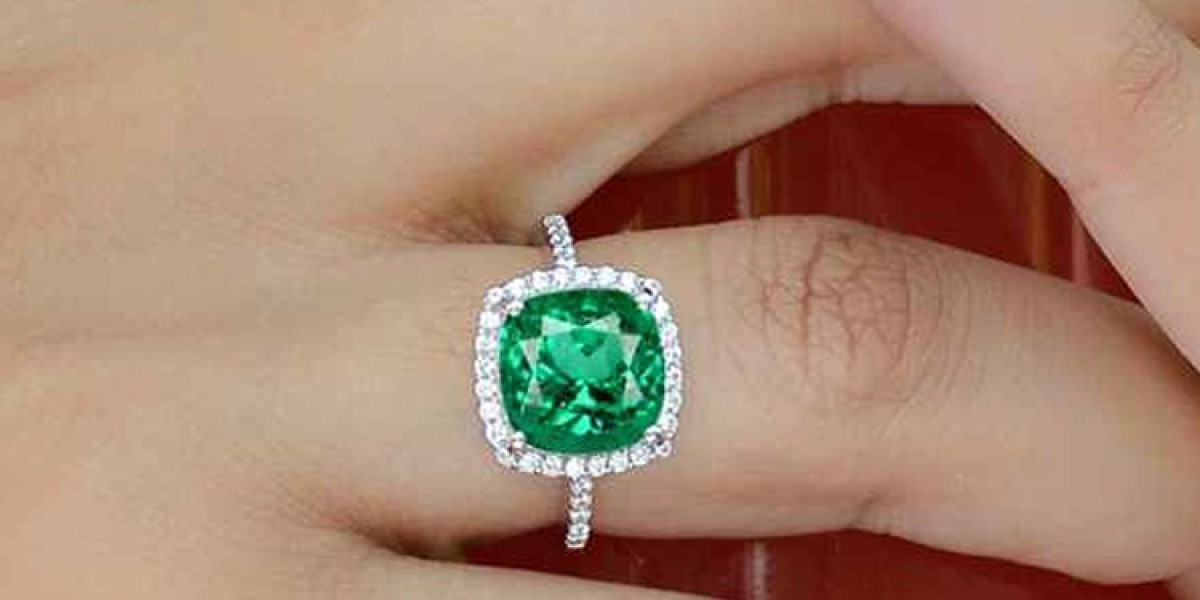In the world of gemstones, few can match the allure and mystique of the emerald. Revered throughout history for its mesmerizing green hue and captivating beauty, this gemstone has long held a special place in the hearts of gem enthusiasts, royalty, and the spiritually inclined. From ancient legends to modern-day beliefs, the emerald has woven its magic into various cultures, making it a stone rich in symbolism and significance.
A Glimpse into Emerald's Past:
The history of emeralds dates back thousands of years, with origins rooted in ancient civilizations like Egypt and India. The name "emerald" comes from the Greek word "smaragdus," meaning green stone. Egyptians considered it a symbol of fertility and rebirth, while in India, emeralds were believed to bring good luck and spiritual growth.
The ancient Incas and Aztecs in South America also prized emerald stone, believing the stones had healing powers and a connection to nature and divinity. Throughout history, emeralds adorned the crowns and jewelry of kings and queens, adding to their mystique and desirability.
The Allure of Emerald's Green:
The unique appeal of emeralds lies in their striking green color. Their shade varies from a light, almost transparent green to a deep, rich green that seems to hold the mysteries of the forest. This vivid color is due to traces of chromium and sometimes vanadium present in the stone's chemical composition.
Unlike many other gemstones, inclusions and minor flaws in emeralds are generally accepted and even embraced, as they are considered part of the gem's identity and referred to as "jardin," which is French for "garden." These inclusions create a mesmerizing pattern that adds character to the stone, making each emerald truly one-of-a-kind.
The Spiritual Significance of Emeralds:
Beyond their physical beauty, emeralds have also been associated with various spiritual beliefs. Some believe that emeralds promote emotional healing, enhancing love, compassion, and empathy. The stone is thought to open and stimulate the heart chakra, encouraging balance and harmony in relationships.
In certain spiritual practices, emeralds are believed to have the power to reveal truth and enhance intuition, making them valuable tools for meditation and introspection. Others consider emeralds to be symbols of hope and growth, representing renewal and vitality in life's cycles.
Emeralds in Myth and Legend:
Emeralds have found their way into numerous myths and legends over the centuries. One of the most famous emerald tales is that of the "Emerald Tablet," an ancient text attributed to the legendary figure Hermes Trismegistus. This tablet is said to contain the secrets of alchemy, written on a large green emerald or carved into a slab of emerald.
In ancient lore, emeralds were also associated with the goddess Venus, embodying her beauty and love. Cleopatra, the last pharaoh of Egypt, was famously enamored with emeralds and often adorned herself with these gems.
Caring for Emeralds:
Emeralds, like all gemstones, require proper care to maintain their brilliance and longevity. Due to their relative softness, emeralds are more susceptible to damage and scratches than harder stones like diamonds. It is essential to avoid exposing emeralds to harsh chemicals or high temperatures, as this can affect their color and clarity.
Regular cleaning with mild soapy water and a soft brush is recommended to keep emeralds looking their best. Additionally, it's essential to store emerald jewelry separately from other pieces to prevent any potential scratching.
Final Thoughts:
Emeralds have been enchanting humans for millennia, captivating the hearts and minds of people across cultures and time. Their lush green color, rich history, and spiritual significance make them an enduring symbol of love, hope, and renewal. Whether worn as jewelry or cherished as a spiritual talisman, the emerald continues to cast its spell, remaining a timeless gemstone that will forever hold a place of prominence in the world of precious stones.



